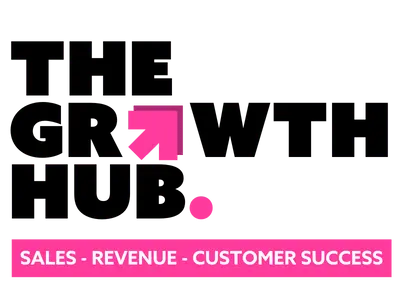In the modern, digitally connected world, the SaaS services market presents the unique advantage of potential global coverage. This not only broadens your reach, but also significantly enhances your sales strategy. With an internet connection being the only prerequisite, anyone across the globe can navigate to your website, create an account, or purchase your product, effectively erasing geographical boundaries.
However, embarking on a global sales strategy also brings to light certain challenges and considerations. An important one is that prospects from foreign countries might not only expect, but indeed require, information in their local language. They might have varying degrees of fluency in your language, and even if they display an interest in your products or services, research shows that a whopping 76% of consumers are more inclined to buy a product with information presented in their native language. Therefore, incorporating localization into your sales strategy is not just an additional feature, but an essential requirement.
Your potential customers want to see pricing that makes sense to them, preferably in their local currency, avoiding confusion and unnecessary currency conversion calculations. But language adaptation should not be confined just to your product descriptions and pricing. You should also ensure support services are available in the customer’s language, showing your commitment to creating a genuinely local experience for customers and prospects alike.
Neglecting the significance of a tailored approach in a global sales strategy can cause you to miss out on immense growth opportunities. Begin personalizing the buying experience with localization – adapting your content and services to meet the cultural and linguistic needs of your customers. This strategic approach can have a profound impact on your prospects, significantly improving customer engagement and loyalty, thereby providing a smoother path to business expansion.
The global market is vast and varied, and by adopting a localized sales strategy, you are not only recognizing these variations but using them to your advantage. This thoughtfulness and customer-centric approach can be the differentiating factor that sets your business apart in the competitive SaaS market.
Why Localization Is Important for Your Business Strategy
The moment your company recognizes the risk of forfeiting potential revenue from individuals who couldn’t find what they were seeking on your website, you’ll begin to appreciate the importance of localization in your global sales strategy. This isn’t just about translating content into different languages; it’s about truly adapting your product and the entire buying experience to cater to different regional and cultural needs.
Localization can seem like a complex process initially, but once implemented, it offers manifold benefits and can be a significant driver of growth. A successful localization strategy doesn’t stop at language adaptation; it permeates every aspect of your business operations and customer interactions, ensuring a seamless and culturally sensitive experience for all users, regardless of their location.
Here are a few areas where the benefits of localization can be effectively leveraged:
Sales and Marketing
Your marketing campaigns hold the potential to be significantly more impactful when you communicate with your customers in their own language. Instead of making the common assumption that your customers understand your language well enough, consider implementing in-language content. This approach goes beyond simple translation; it involves an understanding of your customer’s culture, context, and colloquialisms.
In-language content can serve as a powerful tool to reduce customer churn. It allows your customers to better understand your products, services, and brand message, thus fostering a deeper connection and trust. In fact, it shows your customers that you value them and respect their language and culture, which can greatly enhance their loyalty and engagement.
However, remember that language is only one aspect of a successful international sales strategy. Different countries yield different experiences, cultural norms, and customer expectations. To ensure a seamless customer experience, it’s essential that all your text and visual content is not only linguistically, but also culturally appropriate for your intended audiences. This might involve considering color symbolism, local customs, holidays, or idioms that resonate with your audience.
Moreover, you must be mindful of the varying regulations or legal requirements in each country. What might be an acceptable marketing strategy in one country could potentially be illegal or frowned upon in another. Ensure you comply with local rules and regulations, such as the use of personal information, cookies, or rules around retargeting campaigns. Familiarize yourself with these laws and guidelines before launching your campaigns to avoid any potential legal pitfalls.
Pricing
Localizing the pricing ensures customers understand exactly how much they are paying for your service or product. Converting the price into local currency eliminates any worries regarding conversion charges. Also, be careful in providing an accepted payment method. Enabling a locally preferred payment method has a real impact on winning your customer’s trust.
Product
Once they’ve trusted you with their money, make sure they feel great about their investment and start experiencing value as soon as possible. The onboarding process should be accessible and aligned with local expectations. Start with translating your onboarding content and continue with adapting UX into local languages and usages, such as:
- Data and time displays—which are different in the US vs. Europe (mm/dd/yy vs. dd/mm/yy)
- Script displays—like left-to-right writing, which is common in Middle East countries
Support Services
Just as your domestic customers, your foreign clients also deserve an exceptional customer experience. Selling internationally implies a level of preparedness and a commitment to providing excellent support to your customers. A vital part of your global sales strategy should be enabling localized self-service options, such as translated support documentation or FAQ materials. These resources, adapted to your customer’s language and cultural context, can greatly enhance the user experience and minimize potential misunderstandings or miscommunications.
Furthermore, in an era of interconnectedness and instant communication, it’s important to cover all time zones, offering prompt, efficient solutions wherever your customers are located. The global nature of your business should be reflected in your ability to assist customers at any hour of the day.
While traditional contact channels such as phone and email are essential, your availability on locally preferred chat tools should also be a priority. Different regions may have their preferred platforms, and your customers are most likely to consider these as an accessible, convenient way to get in touch with you.
By choosing their preferred method of communication, you not only cater to their comfort but also build better connections, enhancing customer loyalty in the process. This approach demonstrates a proactive attitude and an understanding of customer preferences, factors that can distinguish your brand in an increasingly competitive global market.
Think Local, Dream Global with Sugar Market
Putting all your eggs in one basket is not a smart business decision. So, if you are serious about growing your foreign revenue, you must provide your foreign clients with the same exceptional customer experiences as you do for your native language customers.
Sugar Market is trying to support a large range of clients that span many geographic areas and thus have different preferences for how they want to experience the product. For them, Sugar’s Q4 2022 release brings in a better user experience as we are introducing different thousand separators and decimal symbols. Now you can experience Sugar Market with number formats that make sense to you.
Want to learn more about how the Sugar platform can help your business reach new performance levels? Don’t hesitate to get a demo today.






